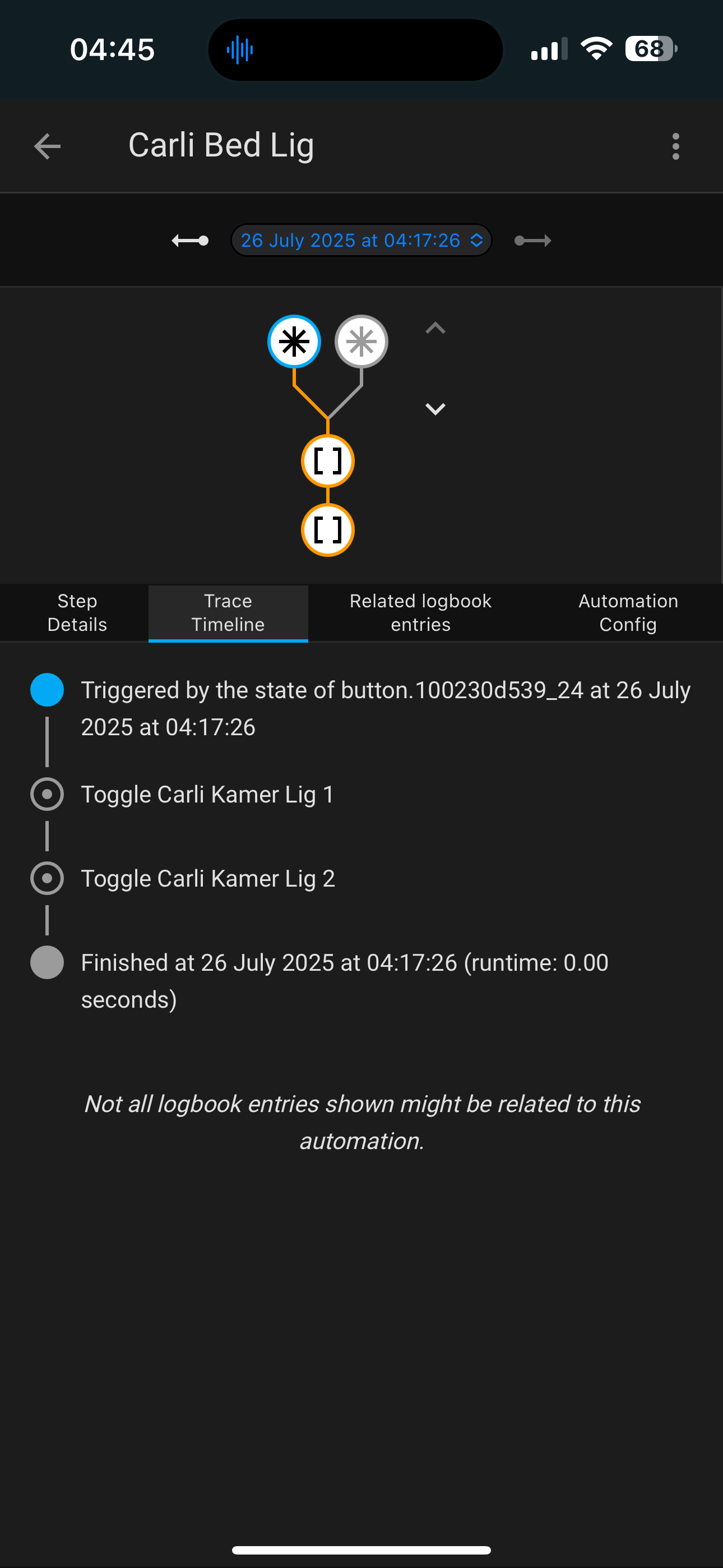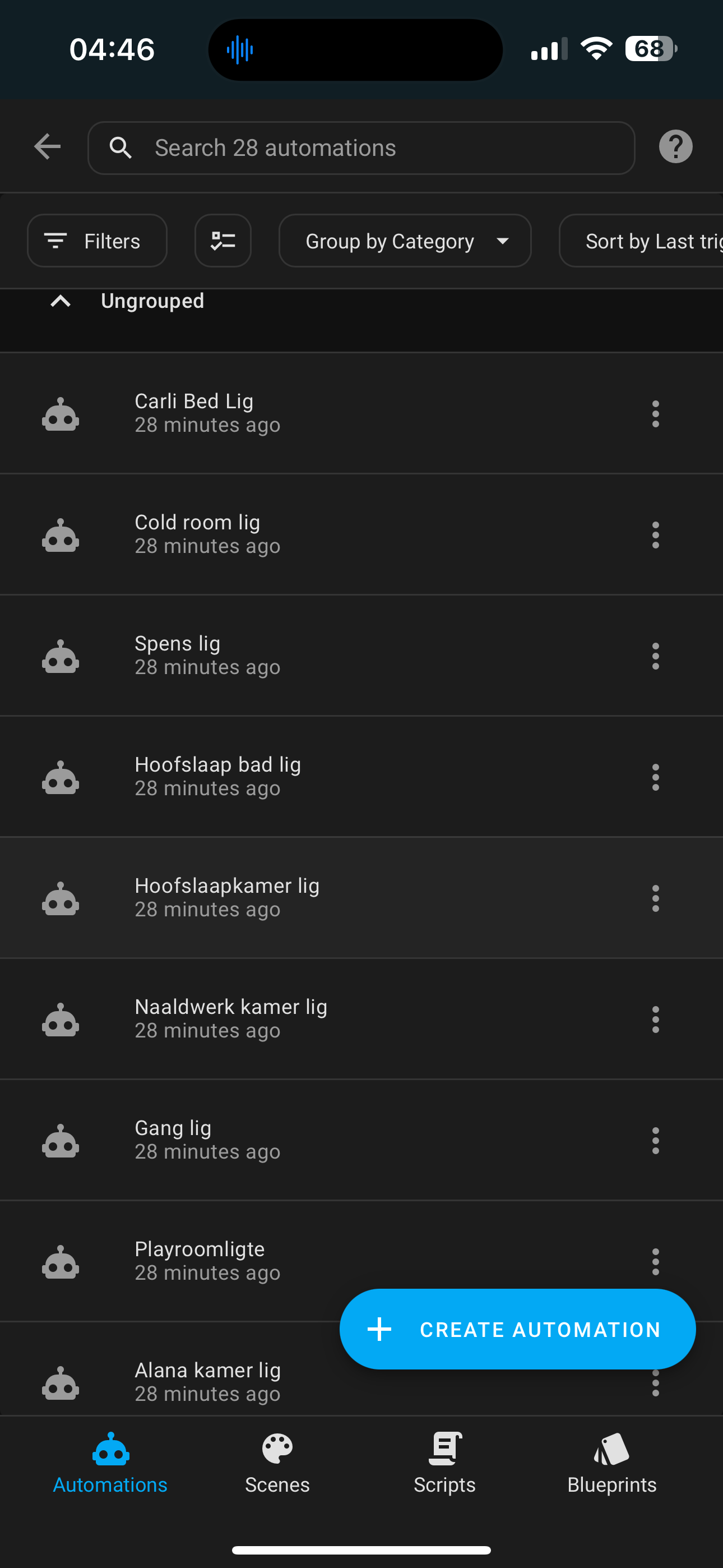Have you ever been sitting in your living room when your Home Assistant lights suddenly turn on by themselves? It can be confusing and even a little spooky.
You might wonder if something is wrong with your system or if there’s a hidden issue you need to fix. Don’t worry—you’re not alone. Many people face this exact problem, and understanding why it happens is the first step to taking control.
You’ll discover the common reasons behind your Home Assistant lights randomly turning on and learn simple ways to stop it from happening. Keep reading to make your smart home smarter and more reliable.

Credit: www.reddit.com
Common Causes Of Random Light Activation
Experiencing random light activation at home can be frustrating. Home automation systems like Home Assistant sometimes face this issue. Identifying the cause is essential to finding a solution. Below, we explore some common reasons why your lights might be turning on randomly.
Software Glitches
Software bugs can lead to unexpected light behavior. Updates might introduce new problems. Checking for recent updates could help pinpoint the issue. Sometimes, a simple restart can resolve minor software glitches.
Faulty Automation Rules
Automation rules control lighting behavior. Errors in these rules might trigger lights unexpectedly. Reviewing these settings is crucial. Double-check conditions and triggers set within Home Assistant. Small mistakes can lead to big surprises.
Interference From Other Devices
Devices can cause signal interference. Wireless signals often overlap, leading to miscommunication. Identifying nearby devices is important. Routers, smart TVs, or other smart home gadgets might be the culprits.
Power Supply Issues
Unstable power can affect light behavior. Voltage fluctuations might cause lights to flicker or turn on. Checking the power supply is vital. Ensure connections are secure and the voltage is stable. Power surges can also cause unexpected activations.
Hardware Malfunctions
Faulty light hardware might be responsible. Checking the physical condition of lights and switches is necessary. Sometimes, a faulty bulb or switch can lead to random activations. Replacing damaged hardware might solve the problem.

Credit: community.home-assistant.io
Troubleshooting Software Problems
When your Home Assistant lights turn on randomly, software glitches are often the hidden cause. Troubleshooting these issues means digging into the system’s inner workings. By focusing on software, you can pinpoint errors and prevent unwanted light activations effectively.
Checking Logs For Errors
Your first step is to check Home Assistant’s logs. These records capture every action and error, helping you spot unusual activity or warnings related to your lights.
Look specifically for error messages or repeated entries around the times your lights switch on unexpectedly. This can reveal if a faulty integration or an automation script is misbehaving.
Have you noticed patterns in the logs that align with the random lighting? Identifying these clues narrows down the problem significantly.
Reviewing Automation Scripts
Automation scripts control when and how your lights behave. A small typo or incorrect condition can trigger lights at odd times.
Go through each automation involving your lights carefully. Check for conflicting triggers or overlapping schedules that could cause multiple activations.
Sometimes, disabling automations one by one helps find the culprit. Does your automation include unexpected “time” or “state” triggers? Adjusting these conditions might stop the random switching.
Updating Home Assistant Firmware
Outdated firmware often causes bugs that affect device behavior. Keeping your Home Assistant software up to date ensures you have the latest fixes and stability improvements.
Check the current version on your dashboard and compare it with the latest release on the official site. Updating can resolve issues caused by earlier bugs that you might never have noticed.
After updating, monitor your lights to see if the random activations stop. Could this simple update be the fix you’ve been overlooking?
Fixing Automation And Configuration Errors
Fixing automation and configuration errors is key to stopping your Home Assistant lights from turning on randomly. Small mistakes in your setup can cause unexpected behavior. Identifying and correcting these errors improves your smart home’s reliability.
Start by reviewing your automations and configurations carefully. Simplify complex rules, disable faulty integrations, and reset automation settings to clear hidden issues. Each step helps narrow down the cause and restore proper control over your lights.
Simplifying Complex Automations
Complex automations often cause conflicts and errors. Break them into smaller, simpler parts. Use clear triggers and conditions. Avoid overlapping actions that may turn lights on by mistake.
- Check if multiple automations control the same light.
- Test each automation separately for correct behavior.
- Remove unnecessary conditions or triggers.
Simpler automations reduce confusion and make troubleshooting easier.
Disabling Problematic Integrations
Some integrations may cause unexpected light behavior. Disable integrations one by one to identify the culprit. Watch if the random light activation stops after disabling an integration.
- Go to the integrations page in Home Assistant.
- Temporarily disable suspected integrations.
- Monitor your lights for changes.
- Re-enable safe integrations after testing.
This process isolates problematic components affecting your lights.
Resetting Automation Settings
Resetting automation settings can fix corrupted configurations. Export your current automations first for backup. Then remove or disable all automations and recreate them carefully.
- Backup existing automation files.
- Delete automation scripts in the configuration folder.
- Restart Home Assistant to apply changes.
- Create new automations with simple, clear rules.
This reset clears hidden errors and restores normal function.

Credit: community.home-assistant.io
Addressing Hardware And Connectivity Issues
Randomly turning lights can be frustrating and even spooky. Often, the cause lies within hardware glitches or connectivity hiccups. Addressing these issues early can save you time and prevent repeated disruptions.
Inspecting Smart Light Devices
Start by checking your smart lights physically. Look for any visible damage, loose wiring, or worn-out components that might cause erratic behavior.
Sometimes, a bulb nearing the end of its lifespan behaves unpredictably. Swapping it out with a new one can quickly confirm if the device itself is the problem.
Have you noticed any flickering before the random turn-ons? That could signal internal hardware faults needing replacement.
Verifying Network Stability
Your smart lights depend heavily on a stable Wi-Fi or Zigbee connection. Interruptions or weak signals often trigger unexpected actions.
Check your router’s status and signal strength near the lights. If the connection drops frequently, consider repositioning your router or adding signal boosters.
Are other smart devices in your home also acting up? Network issues might be the root cause, not the lights themselves.
Replacing Faulty Components
After pinpointing the faulty hardware or weak network area, replace the problematic parts promptly. This might mean swapping out bulbs, smart switches, or even upgrading your router.
Keep spare bulbs or modules handy if your setup is complex. It can speed up troubleshooting and reduce downtime.
Have you thought about testing components one by one? This approach helps isolate the culprit without unnecessary replacements.
Preventive Measures To Avoid Recurrence
Random light activations in Home Assistant can be frustrating and sometimes confusing. Taking preventive steps can help you avoid these unexpected glitches and maintain smoother control over your smart lighting system. Let’s look at some practical measures you can take to keep those random light turn-ons from happening again.
Regular Software Updates
Keep your Home Assistant software and all related integrations up to date. Updates often include bug fixes and security patches that can prevent erratic device behavior.
Imagine updating your phone’s app—sometimes a bug causes it to crash until the developer releases a fix. The same idea applies here. Skipping updates might leave you vulnerable to issues that have already been resolved.
Set reminders or enable automatic updates if possible. This small habit can save you hours of troubleshooting later.
Routine System Maintenance
Check your automations and scripts regularly to ensure no conflicting commands are triggering the lights unexpectedly. Sometimes, overlapping rules cause devices to behave oddly.
Review your logs to spot any unusual activity or errors. This can help you identify patterns before they become bigger problems.
Consider cleaning up unused devices or automations. Keeping your system lean reduces the chance of glitches and improves performance.
Using Reliable Hardware
Not all smart bulbs or switches are created equal. Using high-quality, compatible hardware reduces the risk of random activations caused by faulty devices.
Have you ever had a light switch that flickers or acts up? That’s often a sign of poor hardware or a bad connection. Replacing these with trusted brands can make a big difference.
Also, ensure your network equipment, like routers and hubs, is stable. Unstable connections can cause devices to lose sync and turn on or off unexpectedly.
Frequently Asked Questions
Why Do Home Assistant Lights Turn On Randomly?
Random light activation often occurs due to automation errors or sensor glitches. Check your automation rules and sensor settings for conflicts or false triggers causing this issue.
How To Stop Home Assistant Lights From Turning On Unexpectedly?
Review and adjust your automation triggers. Disable unused automations and update firmware to prevent false signals. Regular maintenance ensures stable light control.
Can Faulty Sensors Cause Lights To Turn On Randomly?
Yes, malfunctioning or miscalibrated sensors can send incorrect signals, causing lights to activate randomly. Inspect sensor health and recalibrate or replace if needed.
Does Interference Affect Home Assistant Light Behavior?
Wireless interference from other devices can disrupt communication, triggering random light activations. Minimize interference by repositioning devices or using wired connections where possible.
Conclusion
Random lights can be annoying and confusing. Check your settings and devices carefully. Faulty wiring or software bugs might cause the issue. Reset your system and update software often. Secure your network to stop outside interference. Keep an eye on patterns to find clues.
Small fixes can bring big improvements. Stay patient and keep testing your setup. Bright, steady control is possible with effort. You can enjoy a smooth home lighting system.






